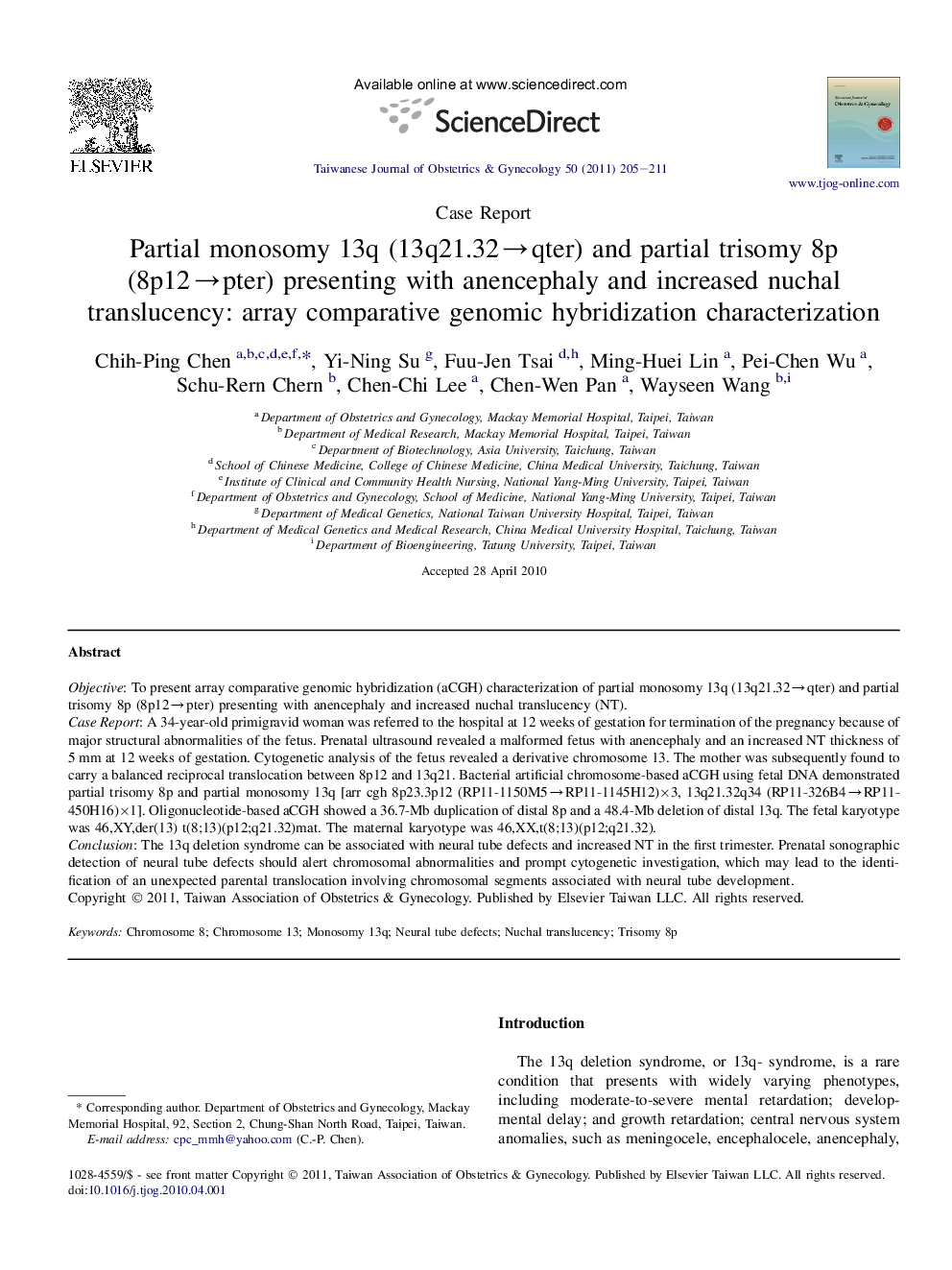| Article ID | Journal | Published Year | Pages | File Type |
|---|---|---|---|---|
| 3975800 | Taiwanese Journal of Obstetrics and Gynecology | 2011 | 7 Pages |
ObjectiveTo present array comparative genomic hybridization (aCGH) characterization of partial monosomy 13q (13q21.32→qter) and partial trisomy 8p (8p12→pter) presenting with anencephaly and increased nuchal translucency (NT).Case ReportA 34-year-old primigravid woman was referred to the hospital at 12 weeks of gestation for termination of the pregnancy because of major structural abnormalities of the fetus. Prenatal ultrasound revealed a malformed fetus with anencephaly and an increased NT thickness of 5 mm at 12 weeks of gestation. Cytogenetic analysis of the fetus revealed a derivative chromosome 13. The mother was subsequently found to carry a balanced reciprocal translocation between 8p12 and 13q21. Bacterial artificial chromosome-based aCGH using fetal DNA demonstrated partial trisomy 8p and partial monosomy 13q [arr cgh 8p23.3p12 (RP11-1150M5→RP11-1145H12)×3, 13q21.32q34 (RP11-326B4→RP11-450H16)×1]. Oligonucleotide-based aCGH showed a 36.7-Mb duplication of distal 8p and a 48.4-Mb deletion of distal 13q. The fetal karyotype was 46,XY,der(13) t(8;13)(p12;q21.32)mat. The maternal karyotype was 46,XX,t(8;13)(p12;q21.32).ConclusionThe 13q deletion syndrome can be associated with neural tube defects and increased NT in the first trimester. Prenatal sonographic detection of neural tube defects should alert chromosomal abnormalities and prompt cytogenetic investigation, which may lead to the identification of an unexpected parental translocation involving chromosomal segments associated with neural tube development.
